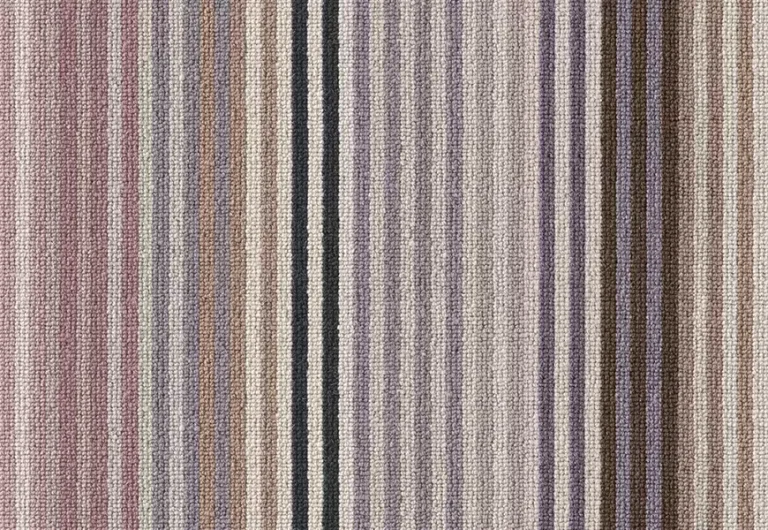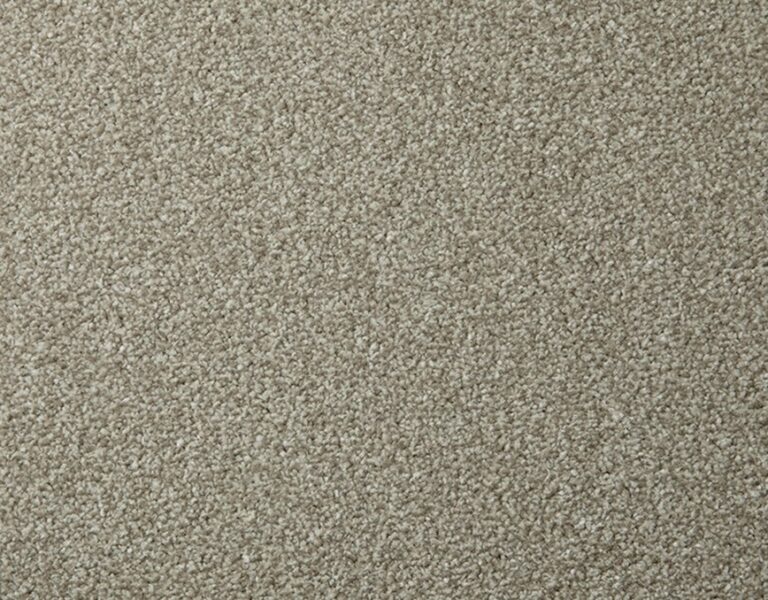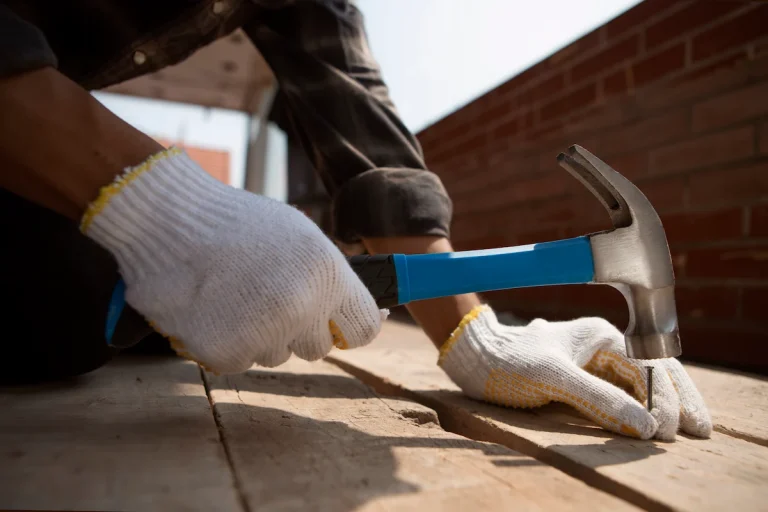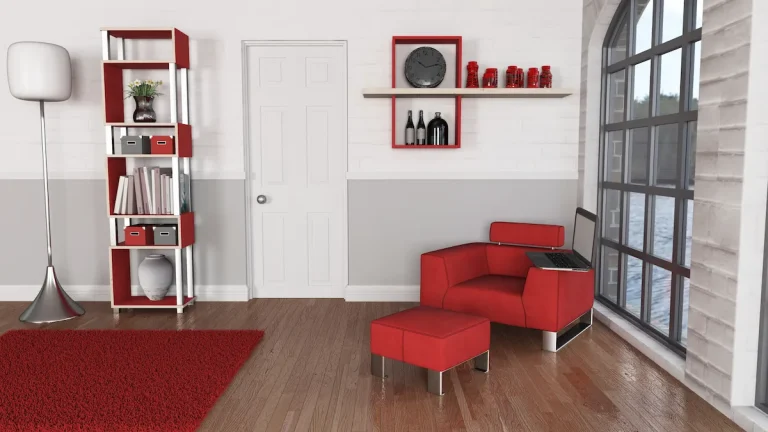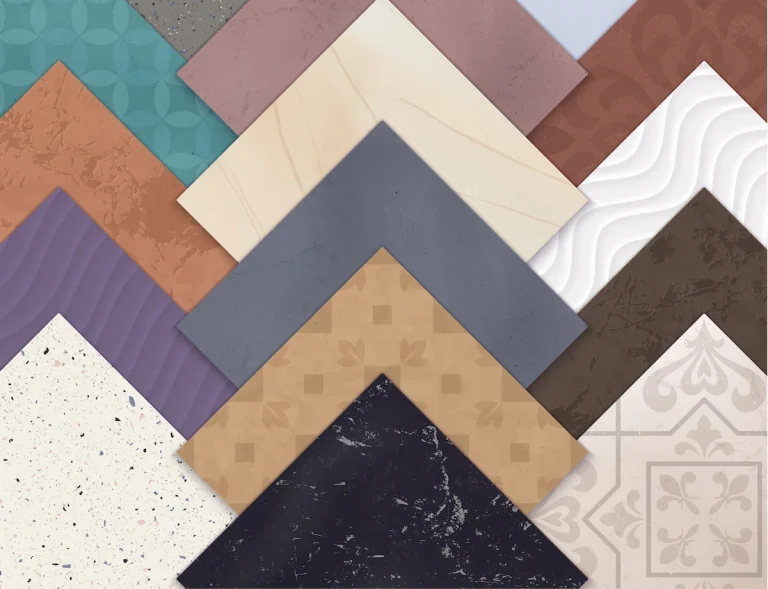When establishing a safe and comfortable living environment for the elderly, the choice of bathroom flooring is of paramount importance. Slips and falls are prevalent hazards in bathrooms, rendering non-slip bathroom flooring for elderly essential for accident prevention.
This article emphasizes the significance of safe bathroom flooring for seniors and outlines key considerations when selecting non-slip options. From a variety of flooring materials to installation recommendations, this guide aims to assist individuals in making informed decisions that enhance safety and provide peace of mind in the bathroom.
Why Is Safe Bathroom Flooring Important for the Elderly?
Safe bathroom flooring is essential for the elderly, as it significantly mitigates the risk of slip-related injuries and accidents in one of the most hazardous areas of the home. Given the high likelihood of wet floors in bathrooms, conventional flooring options may not offer adequate slip resistance. Utilising specialised anti-slip treatments and waterproof flooring can further enhance bathroom safety and minimise slip risks.
Therefore, it is imperative to consider specialised safe bathroom flooring for elderly. Additionally, as individuals age, their mobility and balance often decline, which underscores the necessity for bathroom safety features specifically designed for elderly care. High slip resistance tests should be part of the evaluation process to ensure safety.
Selecting appropriate slip-resistant surfaces can contribute to a safe living environment, minimising bathroom hazards and fostering independence while upholding hygiene standards.
Factors to Consider when Choosing Non-Slip Bathroom Flooring for Elderly
When selecting non-slip bathroom flooring for the elderly, it is essential to consider several critical factors to ensure safety, comfort, and longevity.
Among these factors is the slip resistance rating of the flooring, which assesses its effectiveness in preventing slip-related injuries, particularly in wet conditions. Additionally, the material and texture of the flooring should not only provide a slip-resistant surface but also be easy to clean and maintain, thereby upholding hygiene standards.
Durability is another crucial consideration, as elderly care facilities require flooring that can withstand heavy use without compromising safety. Furthermore, the incorporation of anti-slip treatments can significantly enhance the safety features of the bathroom environment.
1. Slip Resistance Rating
The slip resistance rating is a crucial metric used to assess the ability of flooring materials to prevent slip-related injuries, particularly in high-risk areas such as bathrooms. This rating is typically derived from standard testing procedures that evaluate the friction of flooring surfaces under wet conditions, ensuring compliance with safety standards essential for elderly care. A higher slip resistance rating correlates with a lower risk of accidents, making it a vital consideration when selecting non-slip flooring options.
Determining slip resistance ratings involves a series of rigorous tests designed to assess the coefficient of friction (COF) of various flooring materials. Among the widely recognised methods are the ANSI A137.1 test and the ASTM C1028 test, which replicate real-life conditions by measuring friction on wet surfaces.
Standards such as the R rating system, commonly used in Europe, provide a clear indication of a flooring material’s suitability for slippery environments. For example, tiles made from textured porcelain or slip-resistant vinyl are often identified as optimal choices for elderly bathrooms due to their superior performance in slip resistance assessments.
- Textured Porcelain Tiles: These tiles offer a combination of aesthetic appeal and effective slip prevention.
- Slip-Resistant Vinyl: This material is recognised for its comfort and ease of maintenance while ensuring safety.
Selecting the appropriate flooring material not only enhances the overall decor of the bathroom but also significantly mitigates the potential for falls among the elderly.
2. Material and Texture
The selection of materials and textures for bathroom flooring is critical in enhancing slip resistance and ensuring the safety of elderly individuals. Options such as rubber flooring and safety vinyl are specifically designed to provide slip-resistant surfaces that perform exceptionally well in wet conditions while also offering waterproof capabilities. These flooring alternatives not only promote home safety but also come with mould prevention benefits.
The texture of the flooring contributes to improved comfort underfoot, which is a vital consideration in environments focused on elderly care, where both comfort and safety are of utmost importance.
When selecting appropriate flooring materials, it is essential to evaluate their durability and ease of maintenance. For example, rubber tiles are recognised for their resilience and slip-resistant characteristics, making them particularly suitable for high-moisture areas. Other widely used options include textured vinyl and porcelain tiles, both of which offer excellent grip and easy cleaning.
The following provides an overview of various materials:
- Rubber Tiles: Highly durable and naturally slip-resistant.
- Safety Vinyl: Provides a seamless surface, minimising the risk of water infiltration and mould growth.
- Textured Porcelain: Offers high slip resistance combined with a variety of aesthetic choices.
By thoughtfully selecting flooring options with appropriate textures, the overall safety and comfort of bathroom environments can be significantly enhanced, effectively addressing the needs of elderly individuals.
3. Ease of Cleaning and Maintenance
Ease of cleaning and maintenance is a critical consideration for non-slip bathroom flooring, particularly in elderly care settings where adherence to hygiene standards is paramount. Choosing durable surfaces with easy maintenance facilitates the upkeep of safe living environments for seniors.
When selecting flooring, it is essential to consider materials that not only enhance safety but also facilitate the cleaning process, as this can significantly influence the overall health of residents.
- Hygiene: Flooring options such as vinyl, tiles, or sealed wood are effective in inhibiting the growth of bacteria, rendering them more suitable for environments where hygiene is a primary concern.
- Durability: Opting for durable surfaces contributes to maintaining both the aesthetic appeal and functional integrity over time, thereby reducing the necessity for frequent replacements.
Regular maintenance is vital; activities such as dusting, mopping with appropriate detergents, and promptly addressing spills can substantially enhance the longevity and cleanliness of these surfaces.
Establishing a straightforward cleaning routine and employing mats at entry points can significantly reduce the accumulation of dirt and moisture, ensuring a safe and sanitary environment for the elderly.
4. Durability
Durability is a critical factor when selecting non-slip bathroom flooring for the elderly, as it significantly influences the longevity and performance of various flooring options. Materials engineered for impact absorption and sound absorption, such as rubber tiles, offer improved comfort and contribute to safe interiors.
In evaluating suitable materials for these environments, it is essential to acknowledge that not all flooring options are created equal. Selecting appropriate surfaces not only ensures secure footing for elderly individuals but also plays a crucial role in minimising the need for ongoing maintenance.
High-performance materials, such as:
- Rubber
- Safety vinyl
- Textured tiles
are specifically designed with dual functions in mind: they effectively absorb impacts, thereby reducing the risk of injury during falls, while also providing long-lasting slip resistance to enhance safety. This balance of durability and safety is particularly vital in bathrooms and kitchens, where wet surfaces can frequently lead to accidents.
Ultimately, making informed decisions regarding flooring choices can contribute to creating safer, more accessible living environments for older adults.
Types of Non-Slip Bathroom Flooring for Elderly
What is the best non-slip bathroom flooring? There are several types of non-slip flooring for elderly available, each providing distinct advantages to address the safety requirements of the elderly. Options such as non-slip tiles and vinyl flooring feature slip-resistant surfaces that effectively minimise the risk of accidents on wet floors. Moreover, contemporary spaces can be enhanced through stylish flooring choices that meet both aesthetic and safety requirements.
Additionally, rubber flooring offers enhanced cushioning and impact absorption, contributing to overall comfort underfoot. Cork flooring, recognised for its natural anti-fatigue properties, presents another commendable option.
Furthermore, the use of non-slip mats can significantly enhance safety in critical areas, including showers and around bathtubs.
1. Non-Slip Tiles
Non-slip tiles are increasingly preferred for bathroom flooring due to their slip-resistant surfaces, which significantly reduce slip potential and enhance safety, particularly for elderly individuals. These tiles are specifically designed to provide traction even when wet, effectively minimising slip injuries, making them well-suited for high-moisture environments that are at risk of slip-related injuries. Available in a variety of designs, colours, and textures, non-slip tiles allow for aesthetically pleasing interior finishes without compromising safety.
The aesthetic versatility of non-slip tiles enables homeowners to choose from a broad selection of materials, such as porcelain tiles, ceramic tiles, and natural stone tiles, each offering distinct qualities and styles. For example, porcelain tiles typically possess a slip resistance rating of R9 or higher, while textured ceramic options can achieve a rating of R10. This diversity facilitates the selection of the appropriate tiles for any décor scheme.
Maintenance is another advantageous feature of these tiles, as they are generally resistant to stains and easy to clean, making them a practical choice for households with high traffic. Their durability ensures resistance to wear and tear while continually providing safety; materials like natural stone offer both resilience and an element of elegance.
Popular materials include:
- Porcelain: R9-R13 slip resistance
- Ceramic: R9-R10 slip resistance
- Naturally textured stone: R10-R11 slip resistance
These attributes render non-slip tiles an excellent investment, particularly for homes accommodating elderly individuals, as they ensure a combination of safety and style.
2. Anti-Slip Vinyl Flooring
Vinyl flooring presents an excellent solution for bathrooms designed for the elderly, owing to its versatility, slip-resistant surfaces, design flexibility, and waterproof properties. Safety vinyl is specifically engineered to minimise slip-related injuries, positioning it as a favoured choice for non-slip bathroom flooring.
This flooring option is available in a diverse array of designs and colours, enabling homeowners to create aesthetically pleasing interiors with modern aesthetics and vibrant colours while maintaining a secure living environment.
Vinyl flooring is characterised by its ease of installation, making it ideal for those seeking a streamlined remodelling process. Numerous varieties of vinyl can be installed as peel-and-stick tiles or planks, which significantly reduces both labour costs and installation time. The user-friendly design of vinyl flooring also contributes to its popularity. Once installed, vinyl flooring requires minimal maintenance, necessitating only regular sweeping and occasional mopping to maintain its appearance and prevent bacterial growth.
- Due to its composition, vinyl flooring demonstrates resilience in moist environments, such as bathrooms, effectively resisting mould and mildew.
- Its durability allows it to withstand the daily wear and tear typically experienced in busy households.
Furthermore, homeowners can take advantage of a variety of aesthetic options that replicate the appearance of natural materials, thereby achieving stylish interiors and luxurious bathrooms while prioritising safety.
3. Rubber Flooring
Rubber Flooring is recognised as an exceptional choice for non-slip bathroom flooring, owing to its inherent slip resistance and comfort. This material not only ensures secure footing on wet surfaces but also provides anti-fatigue benefits, rendering it particularly suitable for elderly care facilities and residential settings. The durability and ease of maintenance associated with rubber flooring further enhance its reputation for promoting safety in bathrooms.
The incorporation of rubber flooring in various environments offers numerous advantages. Its textured surface effectively minimises slip hazards, thereby enhancing safety for both seniors and children. Additionally, rubber flooring is comfortable underfoot, providing a cushioned experience that reduces fatigue during extended periods of standing. Its longevity allows it to withstand heavy foot traffic, making it a prudent investment.
Rubber flooring is available in a variety of colours and designs, allowing it to complement any décor. Installation options include interlocking tiles, rolls, or glue-down applications. This versatility makes rubber flooring not only suitable for bathrooms but also for commercial spaces, designer spaces, gyms, and play areas, where safety and aesthetic appeal are of paramount importance.
4. Cork Flooring
Cork flooring is an innovative and effective solution for non-slip bathroom flooring, recognised for its natural non-slip properties and anti-fatigue benefits. This sustainable material is also resistant to mould and mildew, rendering it a hygienic choice for bathroom environments and an effective anti-fatigue solution. Cork provides a cushioned surface that enhances comfort, particularly for elderly users, making it a valuable addition to any safe living space.
Incorporating cork flooring into a bathroom can enhance the overall aesthetic while imparting a sense of warmth and luxury. This versatile material is not only environmentally friendly but also offers exceptional thermal and sound insulation, ensuring the space remains cosy throughout the year. With its natural textures and colours, cork complements a variety of design themes, making it suitable for both contemporary and traditional interiors.
- Environmental Benefits: Cork is derived from renewable resources, making it a sustainable flooring option.
- Low Maintenance: It is easy to clean and resistant to spills.
- Slip Resistance: Cork provides secure footing, particularly advantageous in moist environments.
- Stylish Designs: Available in a variety of finishes to complement any décor.
By choosing cork flooring, homeowners can achieve both functionality and aesthetic appeal in their bathroom spaces, ensuring affordable solutions for high-performance, luxurious bathrooms.
5. Non-Slip Mats
EVA Tatami Foam Mats serve as an effective solution for enhancing safety in bathrooms, providing additional traction in areas susceptible to slips, such as showers and around baths. These mats are specifically designed with slip-resistant surfaces that help prevent accidents on wet floors, making them an essential accessory, particularly for elderly care. Non-slip mats are a user-friendly design, easily removable, and can be frequently cleaned to uphold hygiene standards.
Along with their vital safety features, the design of non-slip mats often includes a variety of textures and colours to complement a homeowner’s aesthetic while maintaining functionality.
When selecting the appropriate non-slip mat, it is important to consider factors such as material, thickness, and durability to ensure effective performance over time. High-quality mats made from rubber or vinyl typically provide superior grip and moisture resistance, making them well-suited for bathroom environments.
- It is advisable to choose mats with drainage holes to prevent water accumulation.
- Opting for mats that are machine washable facilitates ease of maintenance.
- Verify the availability of certifications that indicate reliable slip resistance, especially in high-traffic areas.
These mats not only enhance safety but can also complement various flooring options by adding an extra layer of comfort and traction where it is most needed.
Installation and Maintenance Tips for Non-Slip Bathroom Flooring
The proper installation and maintenance of non-slip bathroom flooring are essential for ensuring long-lasting safety and performance. When installing non-slip flooring, it is imperative to adhere to the manufacturer’s guidelines to meet safety standards and achieve the desired level of slip resistance.
Furthermore, regular maintenance practices are necessary to maintain the flooring in optimal condition, preventing moisture build-up, bathroom accidents, and upholding the hygiene standards essential for elderly care.
a. Proper Installation
The proper installation of non-slip flooring is essential for achieving optimal performance and ensuring compliance with safety standards. This process necessitates meticulous planning, accurate measurements, and, when necessary, the engagement of professional services to guarantee that the flooring is securely installed and provides adequate slip resistance, particularly in environments catering to the elderly. A thoughtfully designed layout that promotes easy navigation can significantly enhance overall safety and comfort in bathrooms.
To ensure effective installation of non-slip flooring, it is imperative to first assess the specific needs of the environment and select appropriate materials that align with the desired safety standards. This assessment includes evaluating the type of surface and the expected foot traffic in the area.
Subsequently, proper preparation of the subfloor is critical, as it establishes a robust foundation for adhesive application and mitigates potential future complications.
- Consult Manufacturer Guidelines: Always refer to the manufacturer’s instructions for installation, as these guidelines offer essential insights into the required tools and methodologies.
- Select Qualified Installers: It is crucial to choose skilled professionals with experience in non-slip flooring installation. Credentials, customer reviews, and past projects should be examined to validate their expertise.
- Design Considerations: Consider incorporating colours or textures that enhance usability, ensuring that they do not compromise slip resistance.
By concentrating on these key areas, one can effectively enhance safety, slip resistance, and usability in critical spaces, such as bathrooms and showers.
b. Regular Cleaning and Maintenance
Regular cleaning and maintenance are essential for preserving the slip resistance, preventing bacterial growth, and ensuring the overall safety of non-slip bathroom flooring.
To ensure a safe environment, it is imperative to pay diligent attention not only to the cleaning methods employed but also to the selection of appropriate cleaning agents tailored to the various materials of non-slip flooring. For example, natural stone surfaces benefit from the use of pH-neutral cleaners to prevent deterioration, whereas vinyl and rubber flooring can tolerate more robust commercial-grade solutions.
- Routine inspections are critical for early detection of signs of wear and tear, which can help minimise hazards, prevent bacterial growth, and extend the lifespan of the high performance flooring.
- Specific techniques, such as utilising a soft-bristle brush or mopping with microfibre cloths, can further protect the surface from scratches.
Establishing a comprehensive schedule that includes both cleaning and inspections will not only enhance hygiene but also reinforce the safety of these crucial areas within homes, particularly those occupied by elderly individuals or persons with mobility challenges.
Conclusion: Choosing the Best Non-Slip Bathroom Flooring for Elderly
Selecting the most suitable non-slip bathroom flooring for the elderly necessitates thoughtful consideration of several factors, including safety, comfort, and aesthetics. By recognising the significance of slip resistance, material selection, and proper installation, homeowners and caregivers can establish a safe living environment that reduces the risk of slip-related injuries.
Given the wide range of flooring options available, such as Anti-Slip Vinyl Flooring, Rubber Flooring, Wood Flooring, Laminate Flooring, and Porcelain Tiles, it is essential to prioritise the specific needs of elderly individuals to promote their independence and comfort in modern settings.
When evaluating non-slip flooring choices, it is imperative to assess the variety of materials that provide optimal traction, such as textured vinyl, rubber, or natural stone. Each material offers unique advantages, allowing for personalised selections that align with both aesthetic preferences and functional requirements.
The importance of proper installation cannot be overstated. A well-executed flooring installation not only enhances durability but also maximises slip resistance, contributing to a comprehensive approach to safety. Furthermore, incorporating visually appealing designs can enhance the overall environment, ensuring that style and functionality coexist harmoniously.
Regular maintenance and inspections are essential, as they help preserve the integrity of the flooring, thereby ensuring its safety for everyday use.
- Evaluate various materials for optimal traction.
- Ensure proper installation for maximum safety.
- Integrate appealing designs for aesthetic harmony.
- Conduct regular maintenance to uphold safety standards.
At TEKA Flooring, we understand the importance of creating a safe environment for the elderly. Our range of non-slip bathroom flooring options is ideal for those looking to improve safety without compromising on style. Whether you’re renovating your bathroom or designing a new one, our expert team is ready to help you choose the best flooring solution that meets your safety needs and aesthetic preferences.
Don’t take chances when it comes to bathroom safety. Choose TEKA Flooring for high-quality, non-slip flooring that offers peace of mind and long-lasting durability. Go to our store today and let us help you make your bathroom a safer place for your loved ones!
Read also:


























